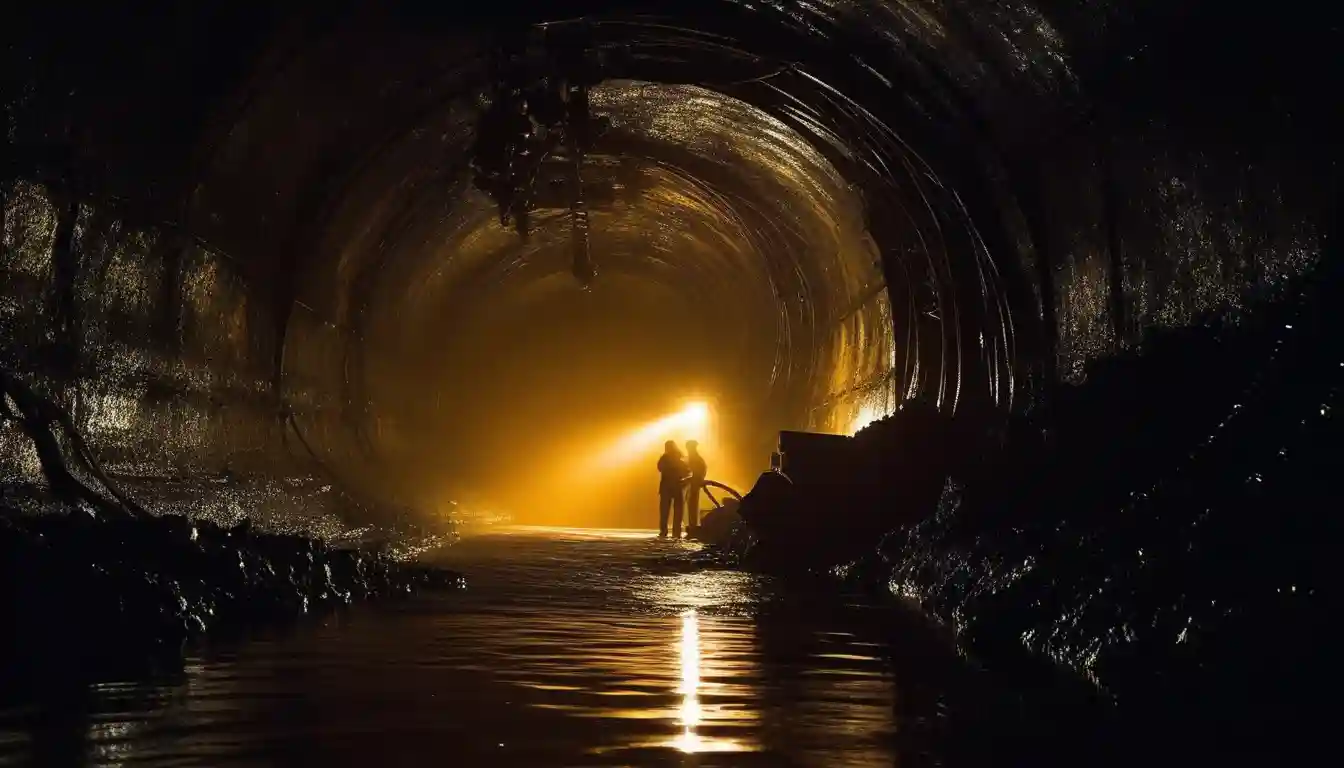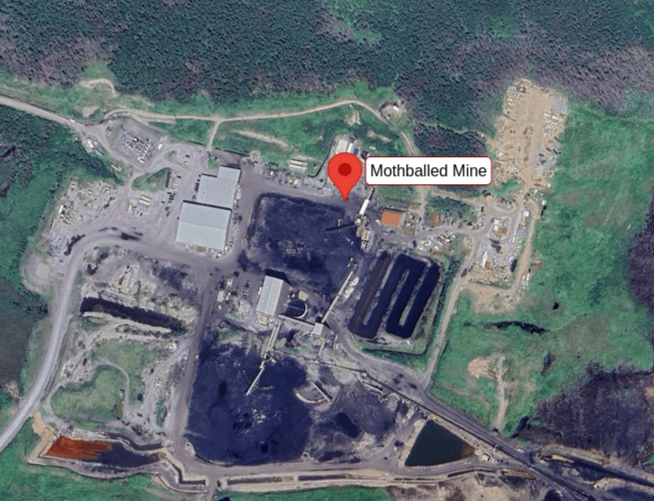
World's Only Subsea Coal Mine Up for Sale After Years of Safety Struggles
World's Only Subsea Coal Mine on the Block: Distressed Asset or Hidden Gem?
Cape Breton's troubled Donkin mine tests investor appetite for high-risk coal assets amid industry-wide exodus
The world's only operating subsea coal mine sits idle beneath the Atlantic waters off Cape Breton, its tunnels silent and its future uncertain. After weathering numerous roof collapses, regulatory shutdowns, and market volatility, the Donkin coal mine's owner has placed the troubled operation on the selling block – creating what industry observers call "an asymmetric opportunity wrapped in geological risk."
Kameron Collieries ULC, a subsidiary of the U.S.-based Cline Group, confirmed this week it has engaged financial advisor Perella Weinberg Partners to explore a full sale of its 100% ownership in the Nova Scotia operation. The announcement marks a pivotal moment for a mine that has experienced a tumultuous eight-year history punctuated by safety incidents and operational challenges.

The Troubled Titan Beneath the Waves
Walking through Cape Breton's windswept coastal landscape, it's easy to forget that beneath the crashing Atlantic waves lies a vast labyrinth of coal tunnels stretching kilometers from shore. Opened in 2017 and hailed as an engineering marvel, the Donkin mine quickly became as famous for its operational disruptions as for its unique subsea position.
"This mine represents both the promise and peril of resource extraction in challenging environments," said an industry analyst who requested anonymity due to ongoing business relationships with potential buyers. "With over 30 significant roof falls since opening, Donkin exemplifies how even modern mining techniques can struggle against geological forces."
The mine's timeline reads like a case study in operational volatility. After opening in 2017, it shut down in March 2020 amid slumping coal prices and safety concerns. Operations resumed in September 2022, only to be suspended again in July 2023 following two roof rockfalls within a week. Though regulators permitted reopening in March 2024 after an independent review, the mine remains idle, maintained by a skeleton crew.
A Royalty Lifeline in Troubled Waters
For investors tracking the Donkin saga, Morien Resources Corp. offers a fascinating proxy. The Nova Scotia-based company holds a production royalty on coal sales from the mine – 2% on the first 500,000 tonnes sold per quarter and 4% on sales above that threshold. Critically, this royalty agreement is binding and will continue regardless of ownership changes.
"The royalty structure creates what traders might call an out-of-the-money option on a successful restart," noted a commodities specialist familiar with the situation. "At current market prices around US$175 per tonne for metallurgical coal, a fully operational Donkin could generate substantial cash flow for both operator and royalty holder."
Since 2017, approximately $159 million in coal has been sold from the Donkin mine, generating steady royalty income for Morien during operational periods. The company now finds itself in a waiting game, as management acknowledged in a statement that "it's unclear whether a successful sale will result in the mine restarting operations."
Coal's Great Migration: The Shifting Ownership Landscape
The Donkin sale announcement isn't occurring in isolation but rather reflects a seismic shift reshaping the global coal industry. Major diversified miners are rapidly divesting coal assets, creating a buyer's market for specialized operators willing to accept higher operational risks.
Just last year, Anglo American sold its portfolio of steelmaking coal mines in Australia to Peabody Energy for $3.8 billion as part of a strategic pivot toward metals like copper. Similar movements have been seen across the industry as Core Natural Resources idled its Itmann coking coal mine and companies like Whitehaven Coal and Coronado explored divestment options.
"What we're witnessing is the great migration of coal assets from diversified majors to specialist operators," explained an energy transition researcher. "The majors are exiting due to ESG pressures and portfolio realignment, while smaller players see opportunity in acquiring these assets at steep discounts to replacement cost."
For the Donkin mine, with sunk capital exceeding C$300 million but chronic safety issues, industry sources estimate a sale price of just US$50-150 million – potentially less than 50 cents on the dollar of invested capital.
The Narrowing Buyer Universe
Who might acquire a troubled subsea coal mine in today's market? The universe of potential buyers has narrowed considerably as ESG considerations and financing constraints limit traditional acquirers.
Market analysts point to three likely categories: private metallurgical coal specialists seeking discounted high-volatility feed; Indian steelmakers needing Atlantic basin coal diversification; or Canadian energy transition investors eyeing methane-to-power or carbon capture opportunities.
"The buyer will need specialized expertise in challenging ground conditions and a high tolerance for regulatory scrutiny," observed a mining consultant. "This isn't for the faint-hearted, but at the right price, the asset offers exceptional optionality for a technically sophisticated operator."
Investment Horizons: Calculating Risk Against Reward
For investors considering exposure to the Donkin situation, the risk-reward calculation hinges on multiple variables: the likelihood of a successful sale, the new owner's technical capabilities, metallurgical coal price trajectories, and regulatory developments.
Morien Resources presents perhaps the clearest investment vector, with shares trading well below the potential net present value of a fully operational mine restart. Based on production of 2.8 million tonnes annually at current market prices, the royalty stream could generate significant value – though this remains contingent on successful remediation of the mine's structural issues.
"The disconnect between market pricing and potential value creates an intriguing asymmetric opportunity," suggested a resources fund manager. "However, investors must recognize this represents a binary outcome – either substantial upside or potentially zero terminal value if the mine never reopens."
Analysts suggest watching for key catalysts in the coming months, including the opening of the data room in September 2025, non-binding offers in Q4, and the outcome of Nova Scotia's October 2025 election, which could impact policies on mine methane exemptions.
Investment Thesis
| Category | Key Details |
|---|---|
| Asset Overview | - Status: Care & maintenance (production suspended July 2023) - Capacity: 2.8 Mtpa (expandable to 3.6 Mtpa) - Coal Quality: High-vol A met coal (11% ash, 1.6% S) - Sunk Cost: >C$300M (replacement cost >C$500M) - Risks: 30+ roof falls, methane emissions (CO₂-e >400kt in 2019), regulatory scrutiny |
| Sale Process | - Advisor: Perella Weinberg Partners - Timeline: Indicative bids Q4 2025 - Likely Bidders: Private met-coal specialists, Indian steelmakers, Canadian energy transition investors |
| Valuation Benchmark | - Implied EV: $50–150M (distressed discount) - EV/t Capacity: $18–54 (vs. Peabody-Anglo deal at $252/t) |
| Morien Royalty (TSXV:MOX) | - Terms: 2% (first 0.5Mt/qtr), 4% thereafter - NPV (10% discount): ~C$128M (C$2.50/share) vs. market price <C$1 - Upside: >C$3.30/share if mine ramps to 3.6 Mtpa |
| Market Context | - Met Coal Price (June 2025): $181/t (spot) - Mid-Cycle Forecast: $200–220/t (India/Vietnam demand) - Cost Curve: 90th percentile at $202/t (Donkin’s cost unproven, risk of >$150/t) |
| Key Risks | - Geotechnical: Persistent roof collapses (High probability) - Carbon Policy: NS methane tax risk (Moderate) - Price Volatility: Spot <$140/t could negate NPV (Moderate) |
| Strategic Plays | - Morien Equity: 3:1 upside/downside at <C$1/share - Distressed Buyers: Target <C$150M + C$70M remediation for >25% IRR - Pair Trade: Long Indian steelmakers, short high-cost Appalachian coal |
| Catalysts | - Sep 2025: Data room opens - Q4 2025: Non-binding bids - Oct 2025: NS election (methane policy risk) - H1 2026: Final SPA or deal collapse |
Investors should note that coal mining investments carry substantial risks, including operational, regulatory, and market volatility factors. Past performance of mining operations does not guarantee future results, and consultation with qualified financial advisors is recommended before making investment decisions related to the natural resources sector.